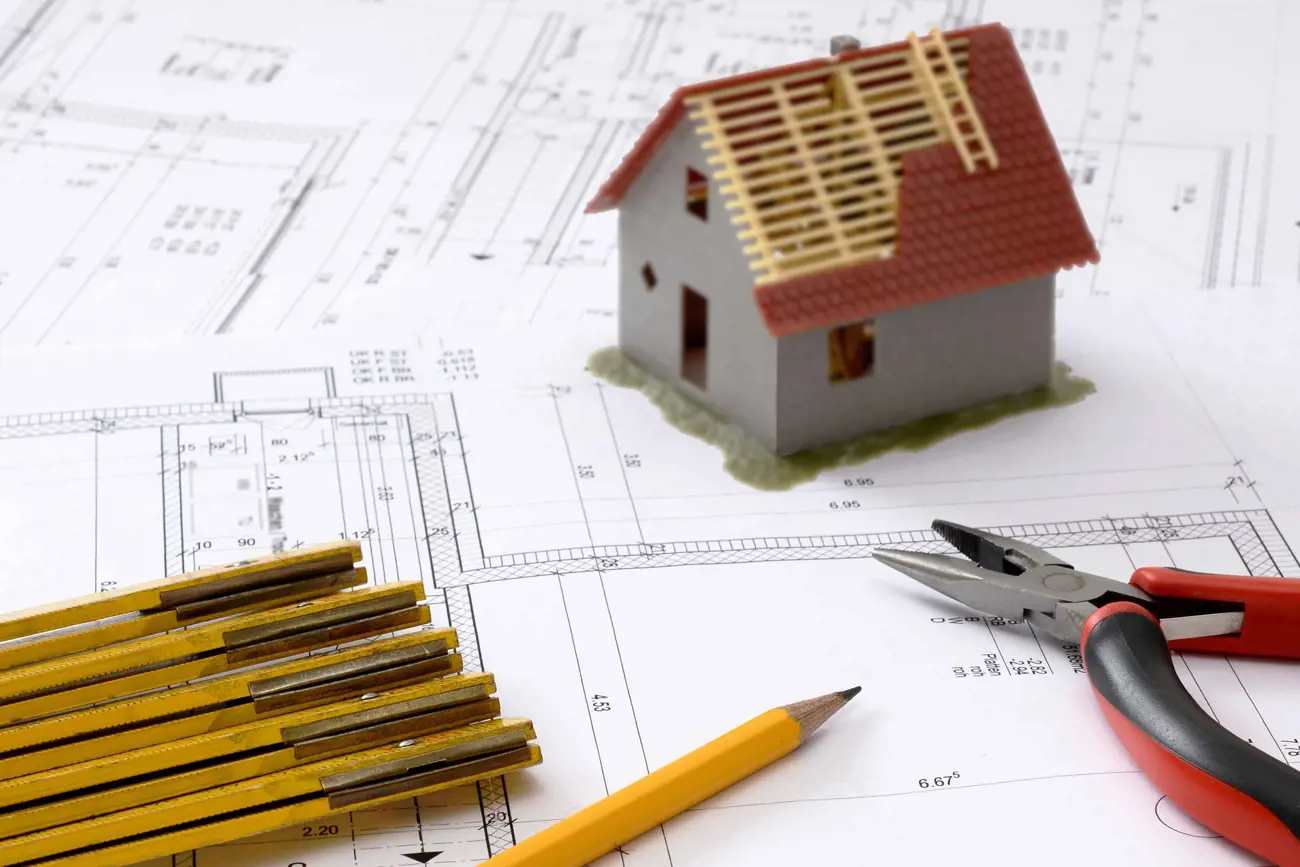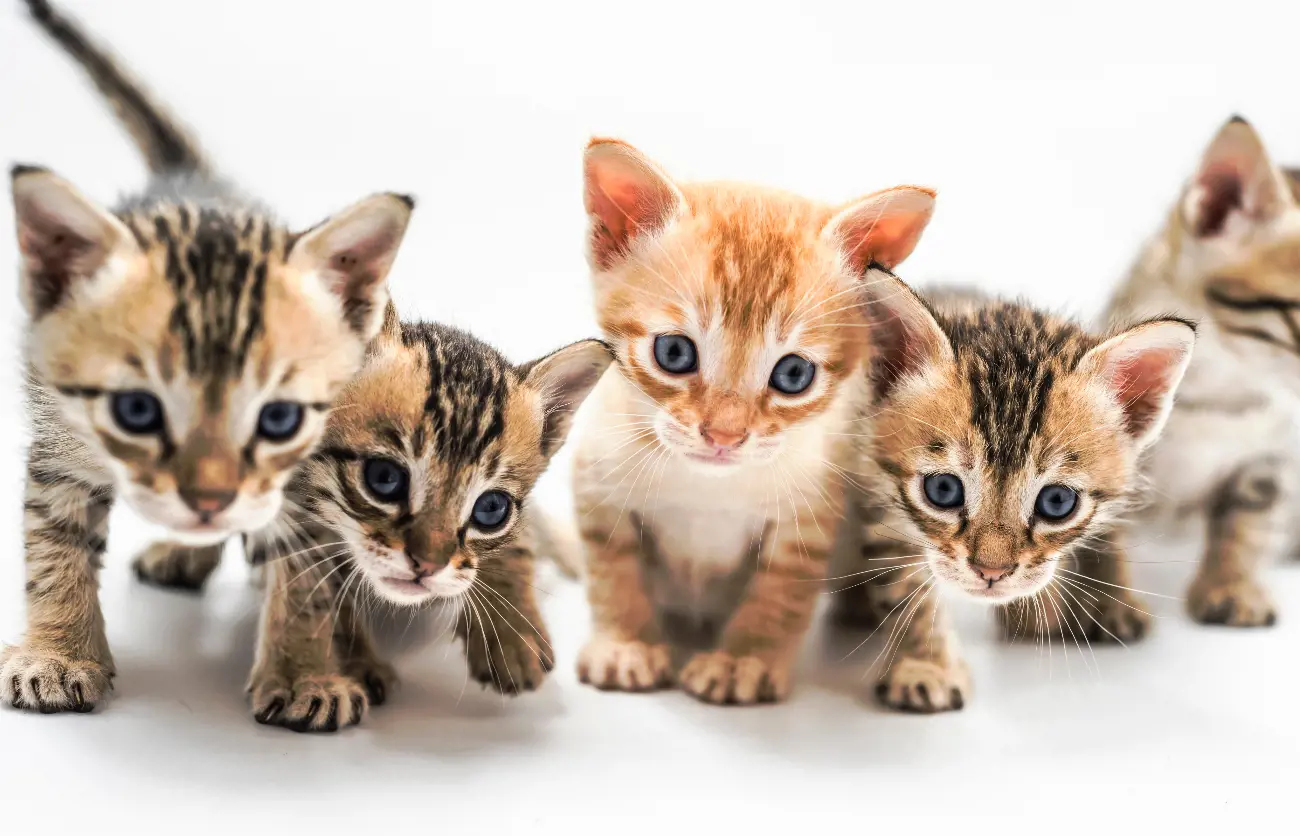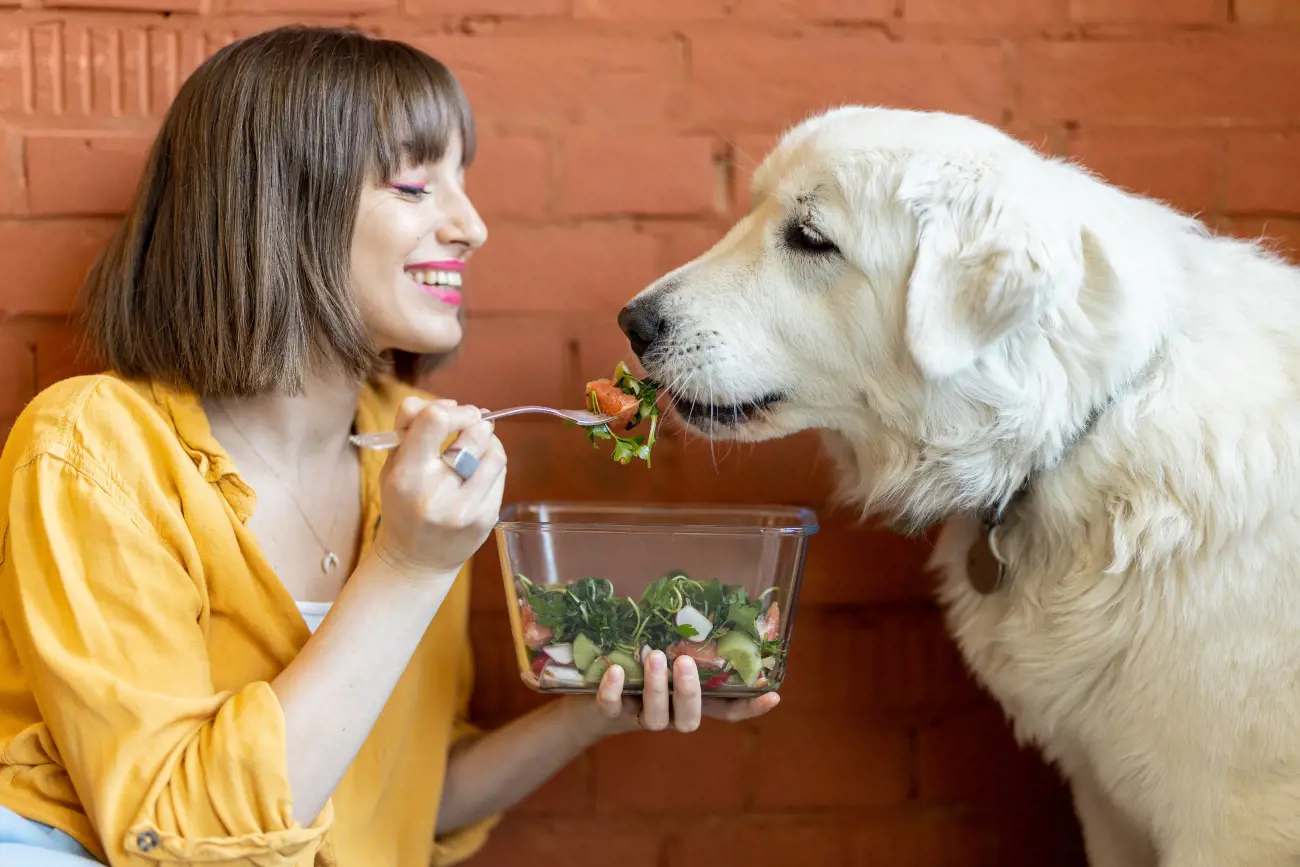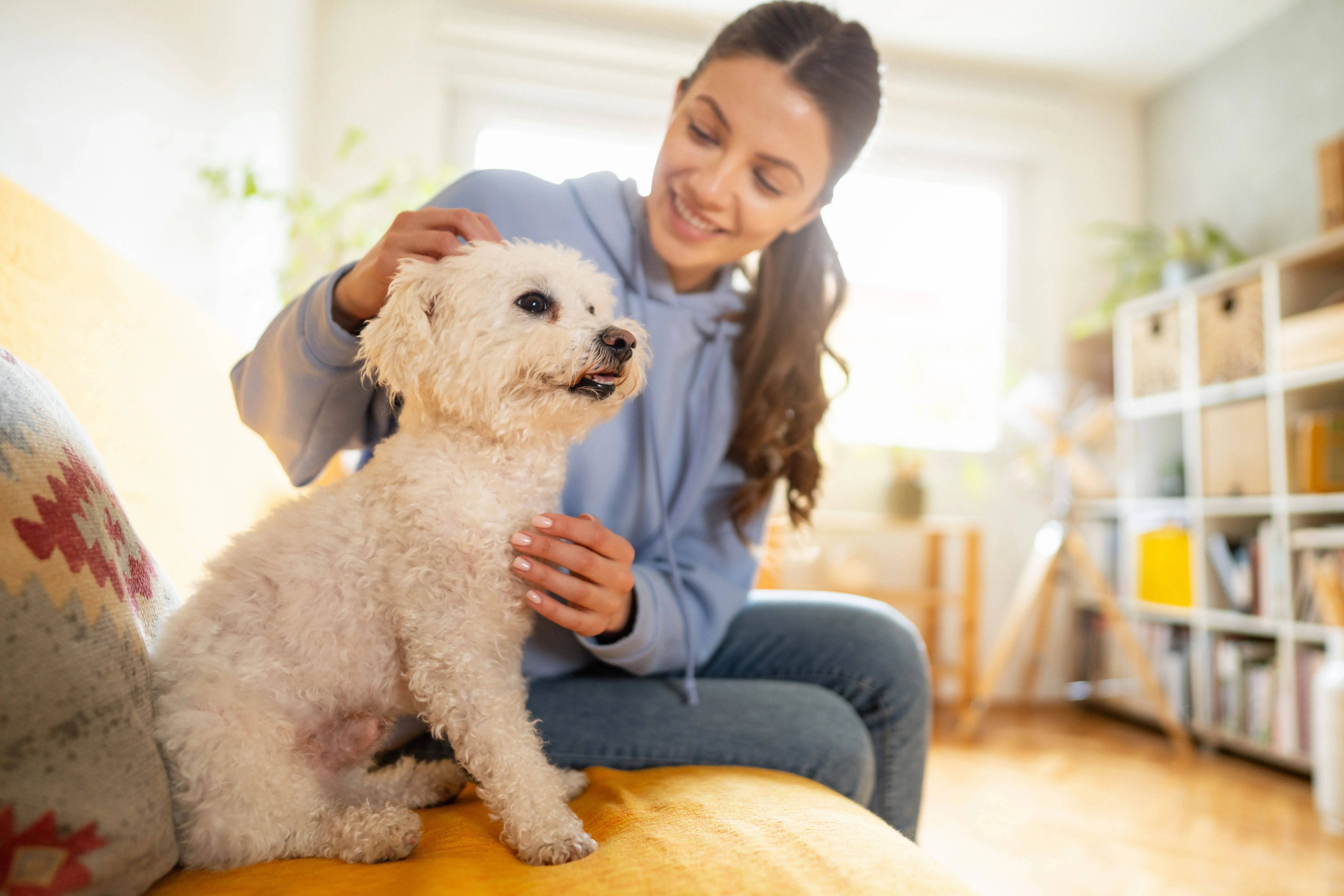How to keep pets safe during home renovations
18th December, 2020

Cats and dogs are creatures of habit. They love to know every nook and cranny of their territory – your home – and feel like they’re kings and queens of their own castle.
So if you decide to remodel your kitchen, build an extension, or even just paint your hallway, they’re likely to react with alarm, confusion or curiosity.
But pets and power tools really don’t go well together. So how do you keep your kitty safe when the builders are in? How can you protect your puppy from plunging into the paint?
Read on for our guide to keeping your pets safe during home renovations. Of course, no matter how careful you are, mishaps can happen. Insurance cover for your pet is a great back-up in case your safety precautions fail and your pooch or moggy gets injured.
What are the risks of building works for pets?
A building site is not a safe place for pets.
Machinery such as cement mixers could well spark the curiosity of your cat. There are cables for your terrier to get tangled in. And we all know how much moggies love to climb ladders – and how liable they are to get stuck at the top.
Smaller animals could get stuck behind your new kitchen cabinet or under floorboards, while pets of any size might break or damage supplies and pick up an injury.
You may think that painting, glueing or varnishing are fairly harmless. But don’t forget that fumes can be dangerous, particularly in an enclosed space. And while it’s unlikely that your dog or cat will lick a strong-smelling chemical product, it’s not impossible.
Even a new carpet can give off gases that can make an animal sick. Poisoning is a serious risk, so keep products out of reach of your animal and contact your vet straight away if you believe your pet has ingested anything hazardous.
Pet insurance covers vets’ fees, and with Purely Pets, you’ve got access to a 24-hour Vet Helpline for any emergency concerns.
Another risk is electrocution from bare wires left sticking out of freshly plastered walls. Kittens and puppies in particular won’t be able to resist a good chew – with life-threatening consequences.
And don’t forget the potential for your pet to cause you or your builders harm: there’s no worse trip hazard than a playful puppy!
The biggest danger, though, is probably that your cat or dog will get spooked and run away from the noise, dust and smells.
Renovations are stressful for pets, who don’t understand what’s happening to their beloved territory and don’t know when – or if – the upheaval will ever end.
So they may well try to escape, particularly if your builders have left doors or gates open, and could get lost or injured.
Pet insurance will help cover the cost of vets’ fees, but it’s advisable to reduce your animals’ stress levels before accidents occur.
How to tell if your pet is distressed
Perhaps you think that your moggy or Maltese is mature and mellow enough to ignore the commotion. But remember that pets can act out of character when they’re disturbed.
Cats in particular are good at hiding their true feelings, so you might not realise at first that your feline friend is upset.
A stressed cat might hide, become withdrawn, be less tolerant of people, or become reluctant to sit on your lap.
It might eat or drink less – or more. It could start pacing or circling, or look disturbed when asleep. And it might groom itself less or more than usual.
Perhaps worst of all, it might be reluctant to use its litter tray, and start soiling or spraying in your house. When you’ve already got the mess and mayhem of home renovations going on, this is probably the last thing you want to be dealing with.
Dogs are more likely to be open than cats about their feelings, whining and whimpering at the first sign of anything alarming happening.
Some, however, do suppress their emotions, so look out for signs such as excess scratching, a decrease in appetite, constipation or other digestive problems, and becoming withdrawn.
A stressed dog is also liable to become aggressive, so it’s vital you keep your pup calm. Pet insurance does provide third party liability in case your dog attacks and harms someone, but it’s a situation you want to avoid at all costs.
At the very least, it’s probable that your builders will rightly refuse to continue working for you, leaving you with a half-renovated home.
Top tips for keeping cats and dogs safe during home improvement works
It goes without saying that the action you need to take depends on what work you are doing, and the temperament of your pet.
But it’s always better to be safe than sorry. So plan for the worst, hope for the best, and you should soon have both an improved home and a vastly relieved pet!
-
Plan ahead
Major home renovations require a fair amount of planning – and your pet’s safety should be part of that process.
Read through our tips below well in advance to avoid a last-minute scramble to make adjustments.
If you are having tradespeople in to do the work, check they are comfortable around animals and are prepared to shut gates wherever possible.
Ask them exactly what the work involves, so you can plan around it: eg what glues or chemical products they’ll be using, and which power tools. If they can give you a rough schedule of when the most dangerous works will be taking place, that makes your task easier.
And introduce them to your dog – it lets your mutt know that these are friendly people who are allowed in your house, and are not to be chased away!
-
Close off the area
If the renovations are confined to one area of your home, such as a bedroom, it’s a fairly simple task to keep the door closed and your pet out.
Put signs on the door to remind you or the tradespeople to keep it closed.
If it’s a larger area, you could use other barriers such as stair gates to keep animals out. However, you’ll need to make sure your builders can work around these. Safety measures are only useful if they’re practical – otherwise, they’re likely to be ignored.
-
Create a safe space
You should also create a secure space for your pet for the duration of the works. Ideally, that will be the place where your dog or cat already sleeps or eats. If that’s not possible, then it’s best to move its basket, litter tray and food bowls gradually, so it gets a chance to adapt and make itself at home.
Choose a room that’s as far away from the renovations as possible. Try to include a few places where it can hide: under chairs or, for cats, high up on a shelf.
Buy your animal some new toys or puzzle feeders to keep its mind distracted from the disturbances.
It’s best to make this a space where your animal can come and go. Cats, in particular, might get stressed at being locked in a room if they’re used to having the run of your home and outside territory. If you do need to shut your animal in, try to keep it brief.
If your whole house is being renovated and you’re out at work during the day, or there’s really no way you can keep your animal and the building works separate, then consider placing your pet with a friend or in a cattery or kennels.
-
Stick to a routine
A great way to reassure your pet is to stick to your normal schedule as far as possible.
Meals and walks should be at the same time as usual. If you’re not carrying out the renovation works yourself, then try to stick to your regular tasks.
This will help convince your cat or Collie that everything’s alright, despite the alarming upheavals taking place. In the chance that you are considering adopting a male or female cat, read our recent blog to help make your decision easier
-
Keep them calm
An animal that’s agitated will be a distraction for you or your builders while you’re trying to get the work done, even if it’s safely locked away.
Worse, it could try to escape and might get lost. Pet insurance cover will help cover the cost of finding your straying animal, but you hardly want to be traipsing around your neighbourhood putting up posters when you’re trying to fit a new bathroom!
So try leaving a radio playing gentle music in your animal’s room. Consider buying a plug-in diffuser that emits pheromones to keep them calm.
Most of all, make sure you take regular breaks from your DIY to cuddle and soothe your pet. Regard this period as a great excuse for some fabulous snuggles or really vigorous, long walks!
-
Exercise your dog
A tired-out dog is a relaxed dog. A good run in the morning means your mutt is far more likely to snooze the day away, oblivious to what you or your builders are doing in a separate part of the house.
If you notice during your work that your dog seems agitated, it’s a good idea to down tools if you can and take it out for a good stick-fetching session. It will give you a break, too.
Mental exercise is also useful. Games – particularly involving food treats – will keep your dog occupied, and take its mind off the building works.
-
Supervise your animal
It’s not always possible to keep an animal in a safe space. But it is essential for the safety of your pet, your tradespeople and you that you don’t allow your dog or cat to get too involved in the renovations.
Sure, it looks cute to see your cat lying on your dust sheets waiting for a tummy rub. But if you turn your back and climb a ladder, it could sneak up the rungs behind you.
If you then step back down without realising, that could spell a serious accident for both cat and you.
Dogs are especially liable to get in the way, so don’t leave them unattended while your builders are at work. If nothing else, they’re likely to delay the project as your builders try to keep them away from power tools or cables.
So avoid a trip to human or animal A&E, and a claim on your pet insurance, by supervising your mutt or moggy where necessary.
-
Clear up thoroughly
It’s when you think the danger’s passed that you are most likely to let your guard down.
Once the work has finished for the day, or your renovations are complete, you need to make sure there’s nothing dangerous left behind.
Stash any tools, machinery, equipment, or chemicals safely away at the end of the day. While your curious cat is likely to steer clear while the work is going on, it might well take a sneak peek after hours – and that’s when accidents occur.
Hopefully, any accident will just involve a mess that’s easy enough to clear up, but there’s always the risk that your pet will suffer an injury.
Once the work is complete, clear up thoroughly. A nail or a shard of glass can easily hurt your poor pooch’s paw, leading to a vet visit. If you’ve got an award-winning pet insurance policy from Purely Pets, you’ll be relieved to know that accidental injuries are covered.
Finally, once all the work is complete and the mess is tidied away, it’s time to snuggle up on the sofa and enjoy your newly improved home with your pet. What a good girl or boy they’ve been!
Get a quote from Purely Pets today
At Purely Pets, we understand that pets can get into pickles in all sorts of strange ways, often when you’re least expecting it.
We offer 15 levels of lifetime pet insurance for dogs and cats, depending on your budget and your requirements.
Vets’ fees from £1,000 to £15,000 are included, depending on your policy, with excess starting from as little as £60.
Cover for lost and straying pets ranges from £1,000 to £2,000, and you can also claim the cost of advertising and rewards up to £2,000.
Get a quote from Purely Pets today to keep your beloved animal protected.
Policy benefits, features and discounts offered may very between insurance schemes or cover selected and are subject to underwriting criteria. Information contained within this article is accurate at the time of publishing but may be subject to change.
Helpful Pages
Recent Posts
Pet Insurance Quote
- 98% claims paid *
- Claims paid directly to vets
- 24/7 vet video consultations
- Interest free monthly payments




